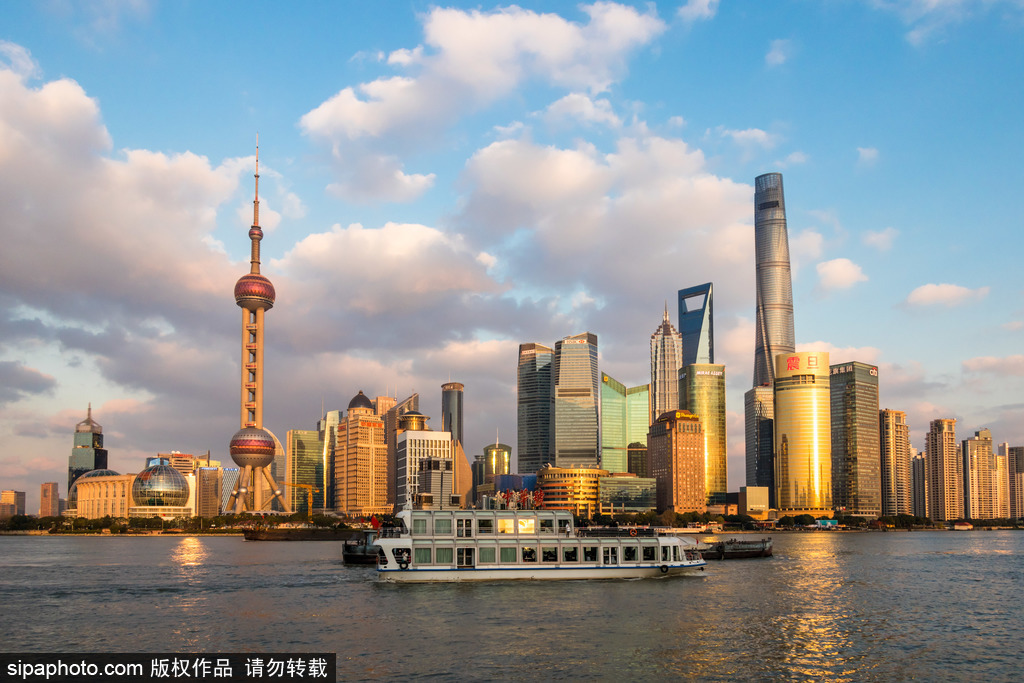
High-rise buildings and skyscrapers dominate the skyline of the Huangpu River and the Lujiazui Financial District in Pudong, Shanghai. (Photo: Sipa)
Buildings above 500 meters restricted after cities overlook traditional styles
A recent guideline will strictly control the construction of skyscrapers to help protect the country's historical and traditional buildings and make urban architecture more representative of the country's culture, experts said.
They also said the document is expected to prevent damage to some cities' historical styles due to large real estate developments.
Freewheeling construction of high-rise buildings will not happen in urban areas, and small cities will face even stricter height restrictions, according to the guideline issued by the Ministry of Housing and Urban-Rural Development and the National Development and Reform Commission.
No buildings taller than 500 meters will be allowed unless their plans are approved by the two central government bodies following strict examinations, said the document, which was published in late April.
Per the guideline, provincial housing and urban-rural development departments are authorized to approve construction of buildings over 250 meters in height, though plans for such buildings need to be registered at the ministry.
A series of factors, including city scale and local fire control capabilities, will be considered in local authorities' examinations of buildings taller than 100 meters. Construction cannot be started unless they go through strict anti-seismic examination and approval, it said.
Meanwhile, restrictions will be imposed on buildings that may exert a negative impact on features and styles of key urban areas. No more historical architecture and traditional dwellings will be demolished.
Li Naichao, head of the Beijing Residential Real Estate Chamber of Commerce, welcomes the initiative, saying it will help put the brakes on the barbaric destruction of many cities' historical and traditional features for economic development.
"For any high-rise buildings, they will surely damage cities' original features and styles and break the succession of local history and culture as there used to be no such buildings," he said.
Some cities, however, have overlooked the protection of such features and styles in urban real estate development. To maximize economic benefits, some developers try to increase the floor area they could sell by constructing tall buildings, he noted.
Since the country's reform and opening-up in the late 1970s, the country has sacrificed some of its natural resources, and the features and styles of historical importance in some urban areas have also been damaged.
"We must put a brake on this as we enter a new development stage. It's a brilliant guideline. We cannot damage cities' features and styles for economic purposes in a barbaric manner," he continued.
The guideline also said management will be intensified for construction of big public facilities, including stadiums, museums, exhibition halls and theaters, to prevent imitation in architecture designs.
Li said such public buildings are major representatives of a city's image and they should boast each city's characteristics. Currently in China, however, like residential buildings, these facilities fail to manifest local features, he said.
He said it's now hard for people to judge where they are if they are sent to a city without being told its name because of the sameness of the buildings.
The guideline is expected to help address the chaos caused by some cities seeking to make architecture unnecessarily ostentatious, and to take aim at some urban locales that worship foreign architectural styles, according to a media release from the Ministry of Housing and Urban-Rural Development.
It also will consolidate the country's cultural confidence and manifest China's characteristics, it added.


